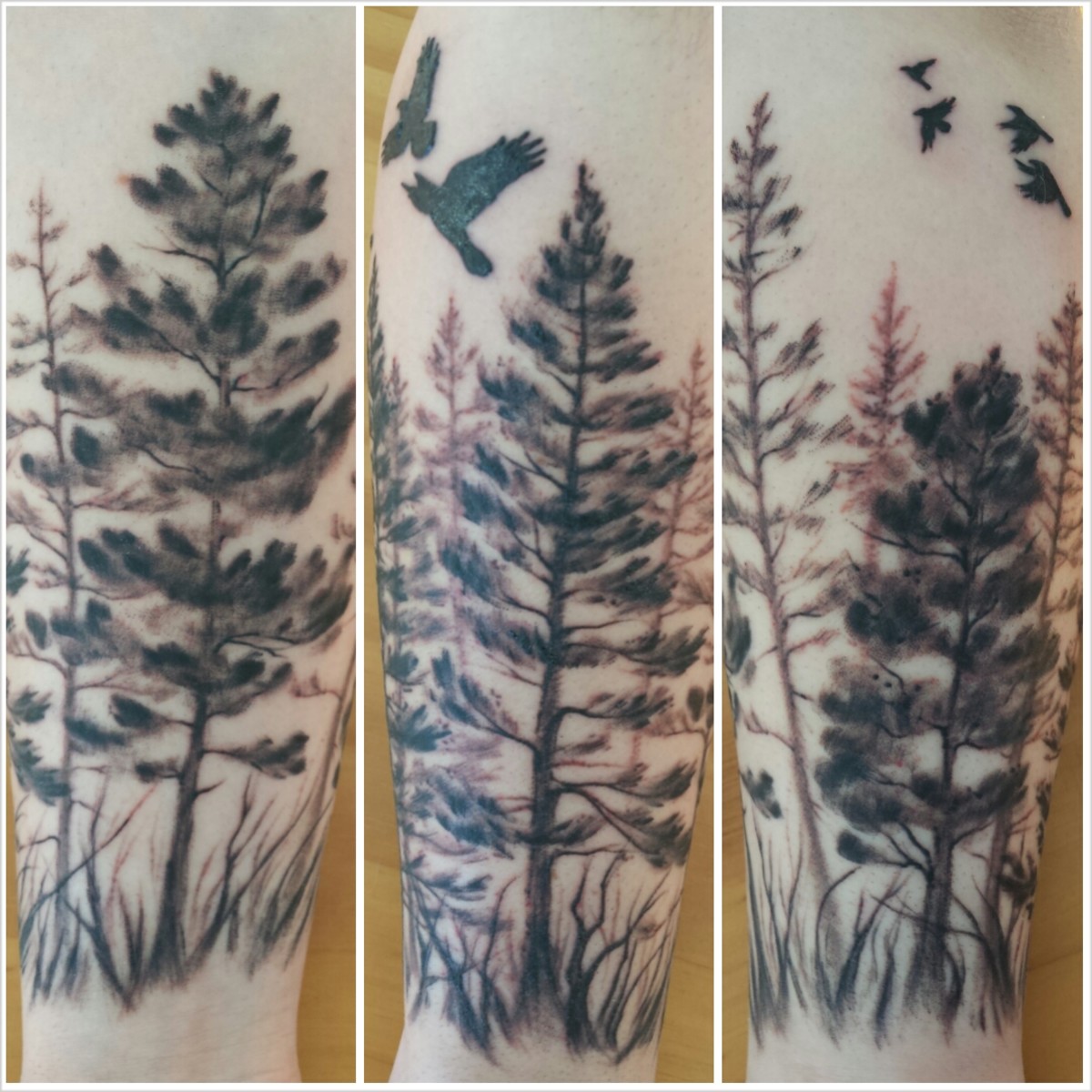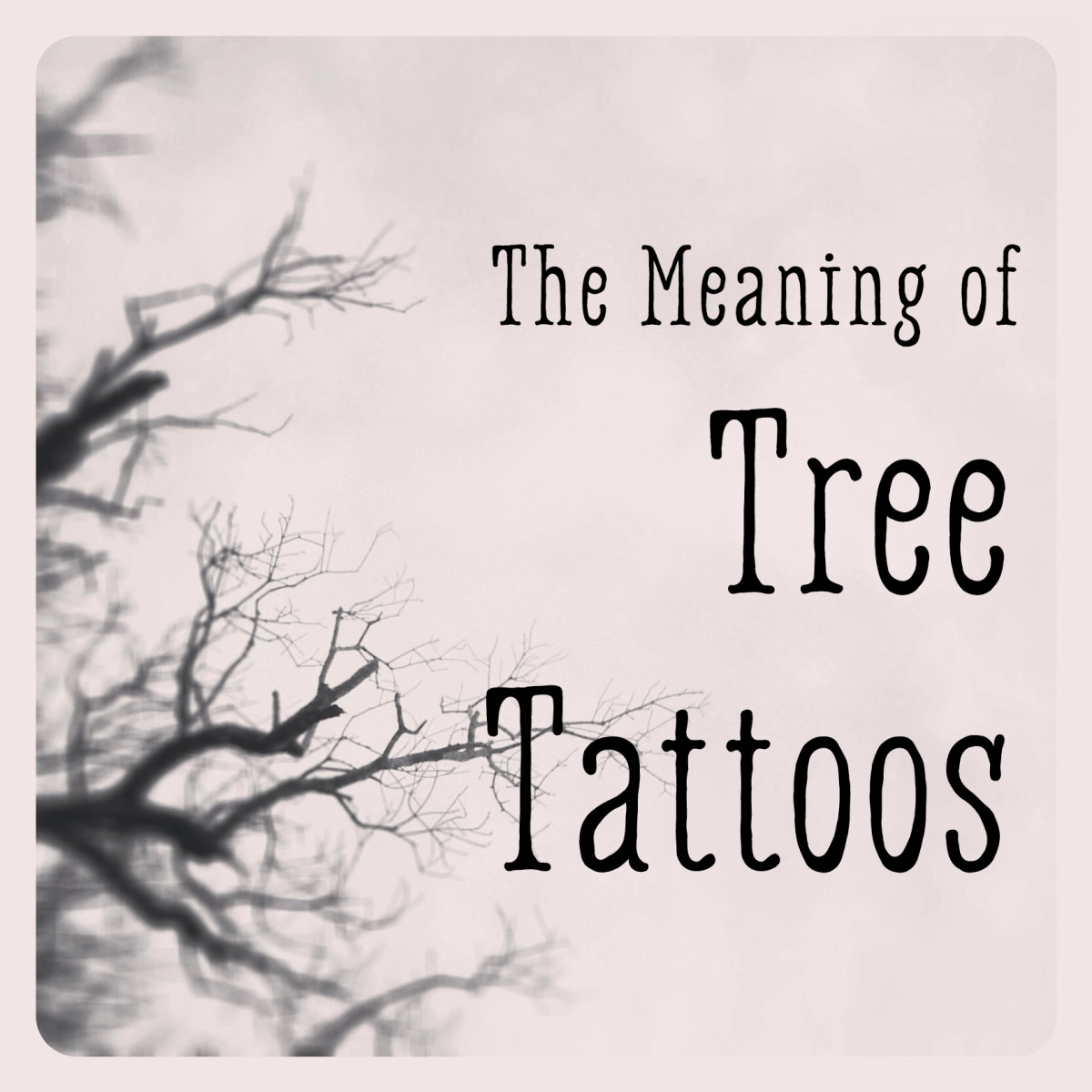Designing Your Own Tree Tattoo
I
got my first tattoo when I was 18. It was a little heart on my lower
back, and it hurt less than I thought it would. But the pain was less
important than the point behind it.
Getting a tattoo is permanent, and while some people like just to grab something that catches their fancy because it’s pretty or scary or popular, others like to do research and spend time figuring out exactly what they want and why they want it. This article is not written for those who want to copy someone else's tattoo, but rather for those who are looking for ideas and inspiration while they design their own unique and thoroughly meaningful tree tattoo design.
Below, you'll find interpretations of what trees mean and some links to resources for images to use to help jump-start your imagination.
Getting a tattoo is permanent, and while some people like just to grab something that catches their fancy because it’s pretty or scary or popular, others like to do research and spend time figuring out exactly what they want and why they want it. This article is not written for those who want to copy someone else's tattoo, but rather for those who are looking for ideas and inspiration while they design their own unique and thoroughly meaningful tree tattoo design.
Below, you'll find interpretations of what trees mean and some links to resources for images to use to help jump-start your imagination.

Pine tree forearm tattoo. | Source
If you would know strength and patience, welcome the company of trees.
—Hal Borland
Religious and Cultural Meaning of Tree Tattoos
As
a general rule, trees are thought of as long-lasting and resilient.
They survive a long time (from 50 to 5000 years), weathering storms and
elements, which makes them a sign of strength and adaptability to many
societies. They offer safety to creatures who live in their branches,
travelers who rest in their shade, and anyone building their home with
lumber. Trees provide apples, pears, and stone fruit and provide
medicine to many cultures. These nutritious and medicinal trees have
accumulated additional layers of importance and meaning.
Tree worship (aka dendrolatry) is the age-old, multi-cultural practice of worshipping or otherwise mythologizing trees. Some people found certain trees to be sacred, such as the Celts and Greeks who revered oak trees. The Celts honored many trees that were thought to have special powers and also to serve as fairy houses. Druids (and other pagans) met in sacred groves, especially the oak, and the term "druid" may come from the Celtic word for oak. Germans felt that way about lime and linden, Scandinavians about ash, and Lebanese about cedar trees. Buddha reportedly saw Bodhi trees as the symbol of enlightenment; for Hindus, the peepal (or sacred fig or Bodhi tree) is also spiritually and holistically important and is used to treat asthma, jaundice, diabetes, epilepsy, gastric problems, inflammation, and infections. The Hindus also worship the banyan, Ashoka, and sandalwood trees. In the Bible's story of Genesis, the tree of life in the Garden of Eden contained all knowledge of good and evil. In Judaism, in the Kabbalah, the tree of life represents a sacred geometry represented as a diagram of ten points.
Today, a form of tree-worship can bee seen in the Christmas tree, which many people (Christian and not) bring into their home during the holiday season and decorate with ornaments and lights. According to the Encyclopædia Britannica,
Tree worship (aka dendrolatry) is the age-old, multi-cultural practice of worshipping or otherwise mythologizing trees. Some people found certain trees to be sacred, such as the Celts and Greeks who revered oak trees. The Celts honored many trees that were thought to have special powers and also to serve as fairy houses. Druids (and other pagans) met in sacred groves, especially the oak, and the term "druid" may come from the Celtic word for oak. Germans felt that way about lime and linden, Scandinavians about ash, and Lebanese about cedar trees. Buddha reportedly saw Bodhi trees as the symbol of enlightenment; for Hindus, the peepal (or sacred fig or Bodhi tree) is also spiritually and holistically important and is used to treat asthma, jaundice, diabetes, epilepsy, gastric problems, inflammation, and infections. The Hindus also worship the banyan, Ashoka, and sandalwood trees. In the Bible's story of Genesis, the tree of life in the Garden of Eden contained all knowledge of good and evil. In Judaism, in the Kabbalah, the tree of life represents a sacred geometry represented as a diagram of ten points.
Today, a form of tree-worship can bee seen in the Christmas tree, which many people (Christian and not) bring into their home during the holiday season and decorate with ornaments and lights. According to the Encyclopædia Britannica,
The use of evergreen trees, wreaths, and garlands to symbolize eternal life was a custom of the ancient Egyptians, Chinese, and Hebrews. Tree worship was common among the pagan Europeans and survived their conversion to Christianity in the Scandinavian customs of decorating the house and barn with evergreens at the New Year to scare away the devil.
In
nature, nothing is perfect and everything is perfect. Trees can be
contorted, bent in weird ways, and they're still beautiful.
—Alice Walker

A Celtic tree of life tattoo. | Source
Tree of Life Tattoos
The
mythology of the tree of life can be found in various religions,
philosophies, histories, and cultures, and while its meaning and design
varies, the general thought behind it is the same. This tree (also known
as the sacred tree, the tree of knowledge, the tree or immortality, the
world tree, or the cosmic tree) alludes to the interconnectedness of
living things and serves as a metaphor for the idea that we all come
from the same life source.
The tree of life symbolizes immortality and eternity, knowledge and wisdom, strength and protection, abundance and growth, forgiveness and salvation. In many tattoos, the tree of life is drawn with its roots and branches intertwined in a circle.
The tree of life symbolizes immortality and eternity, knowledge and wisdom, strength and protection, abundance and growth, forgiveness and salvation. In many tattoos, the tree of life is drawn with its roots and branches intertwined in a circle.

Cherry blossom branch tattoo on side. | Source
Cherry Blossom Tree Tattoos
In
Asian cultures, cherry blossoms are thought to symbolize feminine
beauty. Because of this, and because it’s easier to have a simple cherry
blossom bough instead of a whole tree, they are popular choices for
women.
It’s good to know, though, that to the Chinese, the cherry blossom tree is more about femininity and grace, while the Japanese see it as not just a symbol of womanhood but also as a symbol of life, as the tree itself displays its annual evolutions in a very showy way and in the spring, the blooms only last a few spectacular weeks.
It’s good to know, though, that to the Chinese, the cherry blossom tree is more about femininity and grace, while the Japanese see it as not just a symbol of womanhood but also as a symbol of life, as the tree itself displays its annual evolutions in a very showy way and in the spring, the blooms only last a few spectacular weeks.


Post a Comment
Click to see the code!
To insert emoticon you must added at least one space before the code.